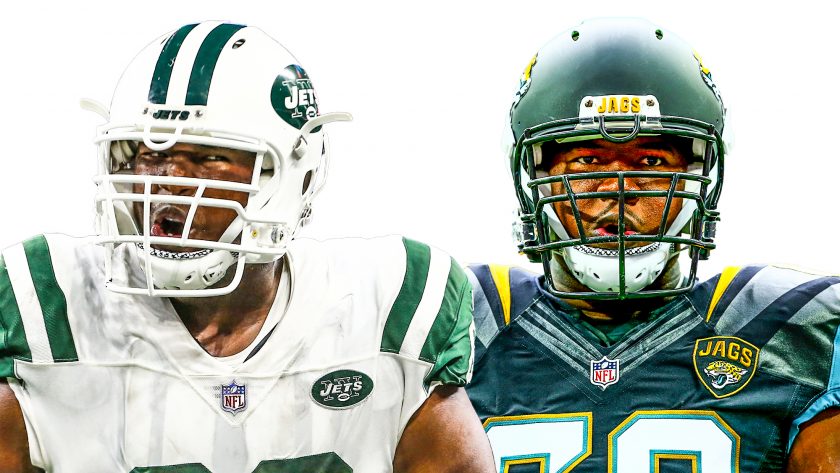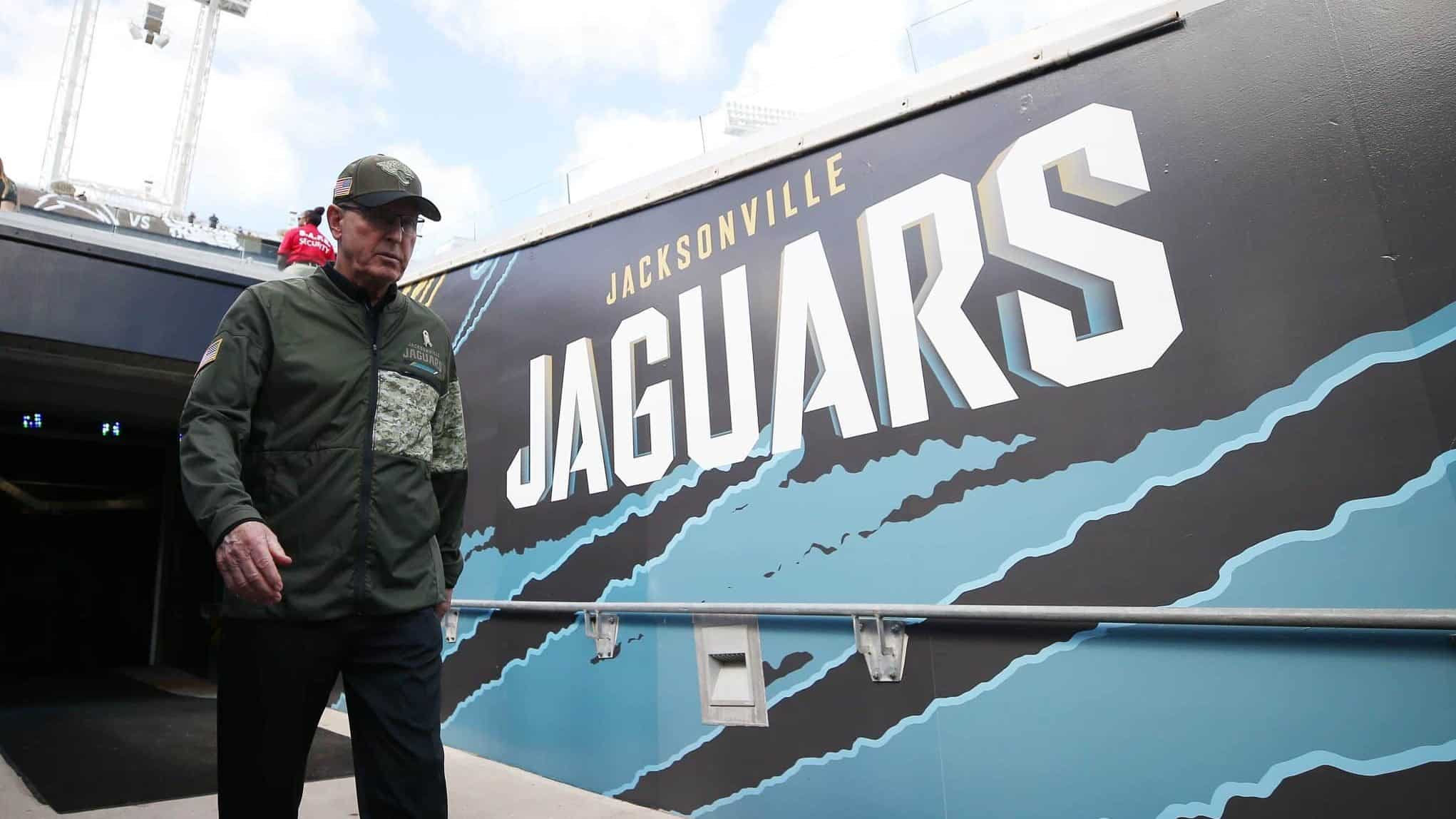New York Jets-Jacksonville Jaguars: Kelvin Beachum symbolizes tale of 2 franchises

Former Jacksonville Jaguars and current New York Jets left tackle, Kelvin Beachum, perfectly symbolizes the tale of two franchises.
[sc name=”Robby Sabo Banner” ]There’s one man who perfectly represents a tale of two franchises as it pertains to the New York Jets and Jacksonville Jaguars. He’s a man who replaced the disappointment that was Ryan Clady while plugging away on the blindside of Josh McCown a year ago and Sam Darnold right now.
You should stop reading now if you need to see the name typed out on this space of the internet.
Beachum, 29, is unspectacular and as steady as they come. He’s a great guy who’ll never anchor the blindside of a phenomenal NFL offense. Unfortunately for the Jets, he perfectly symbolizes a tale of two franchises in one’s ascent and the other’s steady mediocre ways.
Signed to a healthy multi-year deal during the offseason of 2017, Mike Maccagnan once again inked an average veteran offensive lineman instead of drafting the position or spending big bucks. The Jags marked the second NFL organization to give up on the seventh-round tackle (Pittsburgh Steelers).
But forget teams “allowing him to move on.” There’s much more here.
In 2016, the Jags were a below-average rushing squad with Beachum manning down the left anchor. They finished 22nd in the NFL with 101.9 rushing yards per contest.
Just one year later without Beachum, Jacksonville skyrocketed to first in the league in rushing with a cool 141.1 yards per game. A healthy rushing attack and defense led the Jags—with a bottom-shelved quarterback—to the AFC Championship Game.
The difference? Cam Robinson was drafted early in the second round and Leonard Fournette took the job as the lead back. But don’t think Fournette is the only reason for the insane ascent.
The LSU product played in just 13 games while rushing for 1,040 yards and a 3.9 yards per carry average (while the Jags rushed for 2,262 yards in total). This average is far below the team’s YPC of 4.3, meaning the greater difference between 2016 and 2017 is Robinson in favor of Beachum.
[sc name=”Jets Center” ]The Jets, in 2017, on the other hand, finished 19th in running the football with 106.4 yards per game. This is a decline of seven spots as in 2016, New York rushed for 112.6 yards per contest while finishing 12th in the league.
The pass protection stats don’t shine any greater light on Beachum.
Only six tames relented more sacks (47) than the Jets a year ago. The Jags shined in this regard by only giving up 24, tying for third in the NFL. Once again, the year before was a different story. The Jets, without Beachum, surrendered 35 sacks while Jacksonville relented 34.
The only other differences in personnel come in the form of Wesley Johnson taking over for Nick Mangold and Patrick Omameh filling the left-guard void left by Luke Joeckel. Of course, both of those changes contribute to the massive difference in O-line play over the course of a year, but there’s no chance it represents it all.
What happened next really separates the two teams.
Despite finishing with arguably the best O-line in the league, Tom Coughlin didn’t stop. He actually went out and upgraded the unit by signing one of the best guards in the league in Andrew Norwell. Now, Omameh is with the New York Giants as their most recent O-line castoff.
The very same time the Jags were adding to their riches, the Jets were completely ignoring the most important unit in football. There were no rumors of even the slightest of interest in either Norwell or Nate Solder. Then, during the draft, not one O-linemen was selected when there were plenty of opportunities in the middle rounds.

The Jags appropriately pay attention to and focus on the overall health of the O-line. The Jets (seemingly) could care less. If Mike Maccagnan doesn’t believe the position is a plug-and-play spot, then he holds the firm belief his team can succeed without prime talent the spot.
Maccagnan has selected just two offensive linemen in 28 total NFL Draft selections in four years as the Jets general manager. Brandon Shell was one as a fifth-rounder in 2016 while Jarvis Harrison also represented a fifth-round in Maccagnan’s first draft (2015).
And yes, Blake Bortles is the Jags quarterback.
Even if you want to chalk up the Beachum stats pre and post-Jets to pure happenstance, the level for which each organization attends to the O-line is apparent. It’s also playing out on the field.
Since Kelvin Beachum was tossed aside by the Jags and signed by the Jets, two franchises have flown in very different directions. The Jaguars quickly moved from 3-13 to 10-6 and an AFC title game appearance while the Jets remained steady at 5-11.
Any hope in 2018 hasn’t materialized either. The Jags come into Sunday’s contest 2-1 while the Jets are sputtering at 1-2. Of course, the Jags nasty defense contributes to this narrative, but again, the same philosophy is at play considering Jax’s defense is powered by the big nasties up front.
Football, on both sides, always begins up front. It seems like Tom Coughlin not only knows this, he over preaches it while Mike Maccagnan is attempting to invent a new philosophy while simultaneously trying to rewrite 100 years of football history.
To understand the difference of both squads, just look at Kelvin Beachum’s NFL career path the last three seasons.
[sc name=”Jets Link Next” link=”https://elitesportsny.com/2018/09/22/sam-darnold-lack-pre-snap-audible-power-leads-severe-handicap/” text=”Darnold’s Lack Of Pre-Snap Audible Power Leads To Severe Handicap (FILM ROOM)” ] [sc name=”Jets Footer” ]Robby Sabo is a co-founder, CEO and credentialed New York Jets content creator for Jets X-Factor - Jet X, which includes Sabo's Sessions (in-depth film breakdowns) and Sabo with the Jets. Host: Underdog Jets Podcast with Wayne Chrebet and Sabo Radio. Member: Pro Football Writers of America. Coach: Port Jervis (NY) High School. Washed up strong safety and 400M runner. SEO: XL Media. Founder: Elite Sports NY - ESNY (Sold in 2020). SEO: XL Media.
Email: robby.sabo[at]jetsxfactor.com






